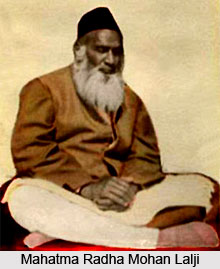 Duties of disciple in Sufism are to be carried out with utmost respect and dedication. The master-disciple relationship is one of the most fundamental and important aspects of Sufism, and the true path to the realisation of God can be achieved by a student only with the help of his master or Pir. The Sufis therefore add a lot of importance to the proper Adab (respect) for one`s master. It is believed that if the disciple`s love for the master is true then it is his duty to respect him at all times. Sufis consider not only the Master but his family also equally respectable.
Duties of disciple in Sufism are to be carried out with utmost respect and dedication. The master-disciple relationship is one of the most fundamental and important aspects of Sufism, and the true path to the realisation of God can be achieved by a student only with the help of his master or Pir. The Sufis therefore add a lot of importance to the proper Adab (respect) for one`s master. It is believed that if the disciple`s love for the master is true then it is his duty to respect him at all times. Sufis consider not only the Master but his family also equally respectable.
The Sufi disciples accord the highest place to their master. In this context, Shaikh Ahmad Faruqi has said that the disciple must observe proper etiquettes in the company of his Master. Shaikh Ahmad Faruqi has also said that when the disciple is in the presence of his Master, he should withdraw his attention from all other things and turn his mind totally towards him. He should not start offering prayer (Namaz) if the time arrives, nor should he engage in performing, except on the order of the Master. None of his actions should show even slightest disrespect for the Master. If he receives some blessings from any saint he must know that it is only his Master`s grace. Even though the blessing is flowing from the other Saint is actually received by him due to his allegiance to his master.
It is the duty of the disciple to consider even the most insignificant word of the Master as absolute law. Mahatma Ram Chandraji used to say that until the disciple becomes completely attuned to his Master, shedding his own will, he is not able to acquire the Divine knowledge that he is looking for. Mere effort on part of the disciple does not lead him to perfection. A Guru (Master) is needed for this. By oneself alone, one can never go beyond the level of the mind. The mind cannot empty itself of itself. How can one empty out the mind, if one is constantly working through the mind. One must be able to leave it, to forget everything. One cannot do this oneself, as the mind cannot go beyond itself. Thus a Guru is needed.
In the Naqshbandi Order of Sufis, said Mahatma Radha Mohan Lalji, no effort on the part of the disciple is needed. The Master through his grace does everything for the disciple. A real Guru, a Satguru, knows how to mould the disciple from deep within, just by a mere sight. The Master does not impose conditions. He is like a loving mother. The child can be angry, can run away but the mother does not take it very seriously. She cares for the child just the same. Similarly, the disciples can and do sometimes leave the Master, but the Master is never supposed to do so since the Master disciple relationship is forever. The disciple cannot go anywhere if he is pledged to the Master. The Master is like an experienced rider who makes the horse go where he wants. But disciples are not slaves. They are free. Even when the personality wants to run away it is difficult for it to do so, the Higher Self knows better. This is a system of liberation, of freedom.
The role of the Master in Sufism is of prime importance. It is he who ascertains by his power whether the disciple has reached the stage of complete surrender, whether he has annihilated himself in the Master or not. If that is so, the Master passes on the disciple to his Master and so on. In course of time, the consciousness of the disciple gets so absorbed in the Masters of the chain that he possesses their spiritual powers. He is then passed still higher up the chain until he merges completely in the Universal Consciousness. The duties of the disciple therefore have to be performed with dedication and with utmost respect for the guru. He alone is able to take the disciple towards his ultimate goal of unity with the almighty and it is therefore the moral duty of the disciple to perform his duties as expected.






































